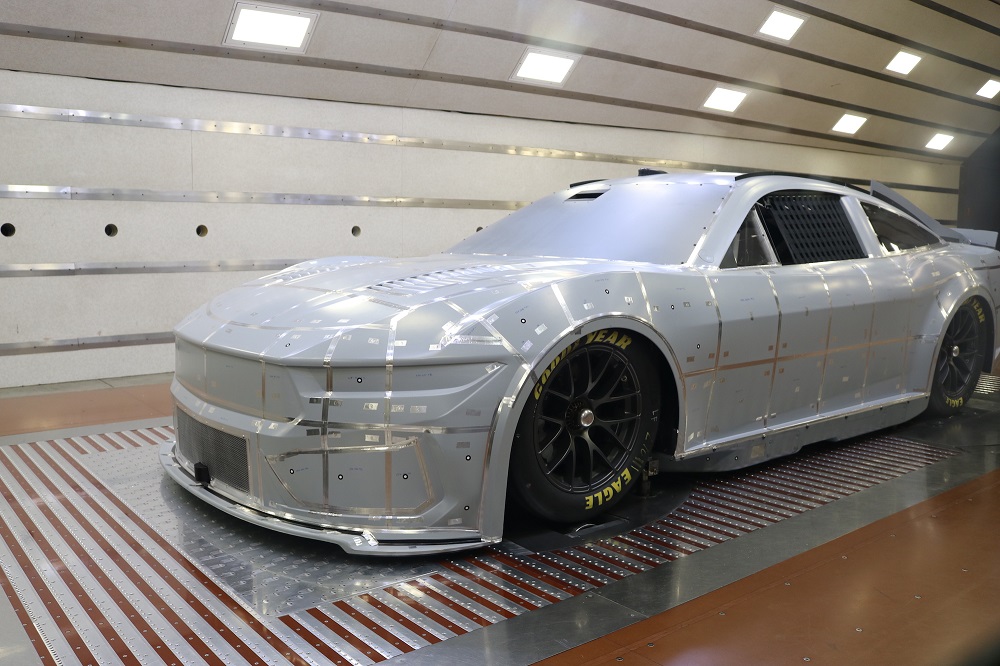Stewart-Haas Racing partnered with 3D Systems to determine the best-performing aerodynamic shape for the new 2024 NASCAR Ford Mustang Dark Horse through an innovative approach to testing hundreds of different body panel shapes in a highly efficient way.
3D Systems’ SLA machines and 3D Sprint software in combination with the development process used by the two companies, yielded a race car body for the Ford Mustang Dark Horse race car that combines the aesthetics of a 2024 production car with aerodynamic performance for the Ford team’s race cars to win races and a NASCAR Cup series championship.
To submit a new race car body shape, the Ford race teams needed to meet specific aerodynamic coefficient specifications as determined by NASCAR. This is ideally achieved during a full-scale wind tunnel test of the submitted car body, which can be extremely costly and time-consuming. Stewart-Haas Racing found a more efficient solution that allows it to test dozens of different body panel shapes during each test session by partnering with additive manufacturing firm 3D Systems.
The 3D Systems’ 3D Sprint software is intuitive to use and enables the technician to set up CAD models of parts that require printing. It is then possible to send the resulting files to 3D Systems’ ProX 800for fast, accurate printing of the parts in the desired material. By fastening the 3D-printed parts to the sub-structure of the full-scale car, Stewart-Haas Racing could define the entire car body shape using these 3D-printed tiles.As the car wasundergoing tests in the wind tunnel, additional 3D-printed tiles could be added or removed from the car to test various concepts.
More information www.3dsystems.com















